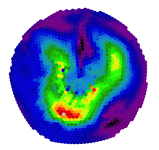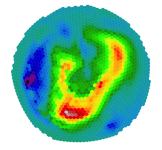Hi,
I was trying to run the limited-area simulation within a circular domain (about1800 cells), which was created from x1.10242 and partitioned by "gpmetis -minconn -contig -niter=200 graph.info N".
I was able to run the model with a single processor without any issue, but the model crashed after one time step once I used more than one processor (e.g., 2, 4, 6...). The error message was "CRITICAL ERROR: NaNs detected in w field". I then tried very small time step, the model would run a few time steps before wind fields blew up.
Has anyone seen similar issues with parallel computing of limited-area models? Any thoughts on what could lead to the numerical instabilities, halo exchange?
Thanks,
Yuan
I was trying to run the limited-area simulation within a circular domain (about1800 cells), which was created from x1.10242 and partitioned by "gpmetis -minconn -contig -niter=200 graph.info N".
I was able to run the model with a single processor without any issue, but the model crashed after one time step once I used more than one processor (e.g., 2, 4, 6...). The error message was "CRITICAL ERROR: NaNs detected in w field". I then tried very small time step, the model would run a few time steps before wind fields blew up.
Has anyone seen similar issues with parallel computing of limited-area models? Any thoughts on what could lead to the numerical instabilities, halo exchange?
Thanks,
Yuan


